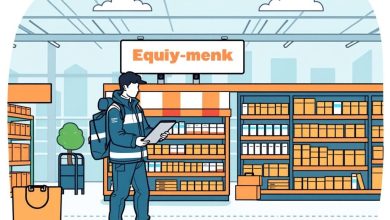Field Service Management with Feedback Loops from Completed Jobs

Field Service Management with Feedback Loops from Completed Jobs
- Introduction
- The Importance of Feedback Loops in Field Service Management
- Implementing Feedback Loops in Field Service Management
- 1. Choose the Right Tools
- 2. Design Effective Surveys
- 3. Ensure Technician Buy-In
- 4. Analyze and Act Upon Feedback
- Case Study: Improving Customer Satisfaction through Feedback Loops
- Challenges in Implementing Feedback Loops
- Conclusion
Introduction
Field service management (FSM) is a critical component of many industries, including HVAC, electrical work, plumbing, and home maintenance. It involves managing and coordinating tasks related to sending technicians to customer locations to perform services. However, effective FSM goes beyond just scheduling appointments and dispatching workers. It also involves gathering feedback from customers after job completion to improve future services.
This article explores the importance of incorporating feedback loops into field service management processes. We’ll discuss how collecting and analyzing data from completed jobs can lead to improved customer satisfaction, increased efficiency, and better decision-making within organizations.
The Importance of Feedback Loops in Field Service Management
Feedback loops are essential in any business process, including FSM. They allow companies to understand what customers think about their services and identify areas for improvement. In the context of field service management, feedback loops help organizations:
- Identify recurring issues or complaints
- Understand customer expectations
- Improve service quality
- Enhance technician training
- Optimize scheduling and resource allocation
Implementing Feedback Loops in Field Service Management
Implementing effective feedback loops requires several steps:
1. Choose the Right Tools
To collect feedback efficiently, companies need to invest in appropriate technology. This may include:
- Mobile apps for technicians to capture real-time feedback
- Customer relationship management (CRM) systems with built-in survey tools
- Analytics platforms to process and visualize data
Some popular FSM software solutions that offer feedback collection features include:
- ServiceMax
- FieldService.com
- ClickSoftware
- ServiceNow
2. Design Effective Surveys
Creating well-designed surveys is crucial for gathering valuable insights. When designing surveys, consider:
- Keeping them short and concise
- Using clear, specific language
- Including both quantitative and qualitative questions
- Avoiding leading questions
Example of a good feedback question: “On a scale of 1-5, how satisfied were you with the overall service experience?”
3. Ensure Technician Buy-In
Technicians are often the face of the company when interacting with customers. Their buy-in is essential for successful feedback collection. To achieve this:
- Educate technicians on the importance of feedback
- Make the process easy and quick for them
- Provide incentives for high-quality feedback
- Regularly review and act upon feedback to show its value
4. Analyze and Act Upon Feedback
Once feedback is collected, it’s crucial to analyze it properly and take action based on the results. This involves:
- Setting up dashboards to visualize feedback trends
- Identifying patterns and correlations
- Prioritizing areas for improvement
- Creating action plans based on feedback analysis
Case Study: Improving Customer Satisfaction through Feedback Loops
Let’s look at a hypothetical case study to illustrate how implementing feedback loops can lead to improved customer satisfaction.
XYZ Plumbing Services, a medium-sized plumbing company, decided to implement a comprehensive feedback loop system. They chose to use a mobile app that allowed technicians to capture real-time feedback from customers after each job completion.
Over a period of three months, XYZ collected over 500 feedback forms. The analysis revealed some surprising insights:
- Many customers complained about long wait times before appointments could be scheduled.
- Some customers expressed dissatisfaction with the cleanliness of work areas left by technicians.
- A significant number of customers appreciated the professionalism and courtesy of the technicians.
Based on these findings, XYZ took the following actions:
- Implemented an online booking system to reduce wait times.
- Created guidelines for maintaining clean work areas during jobs.
- Recognized and rewarded technicians who consistently received positive feedback about their professionalism.
The result was a 25% increase in customer satisfaction scores within six months of implementing the feedback loop system.
Challenges in Implementing Feedback Loops
While implementing feedback loops can significantly improve field service management, there are challenges to overcome:
- Ensuring high response rates from customers
- Maintaining the privacy and security of customer data
- Dealing with negative feedback constructively
- Balancing the need for detailed feedback with the desire for quick responses
Conclusion
Field service management with feedback loops from completed jobs is a powerful strategy for improving customer satisfaction, increasing efficiency, and driving business growth. By investing in the right tools, designing effective surveys, ensuring technician buy-in, analyzing feedback, and taking action based on results, organizations can create a closed-loop system that continuously improves their services.
As the field service industry continues to evolve, incorporating feedback loops into FSM processes will become increasingly important. Companies that embrace this approach will likely outperform those that don’t, as they’ll have a deeper understanding of customer needs and preferences.
Remember, the key to success lies not just in collecting feedback, but in using it to drive meaningful improvements in your field service operations.




